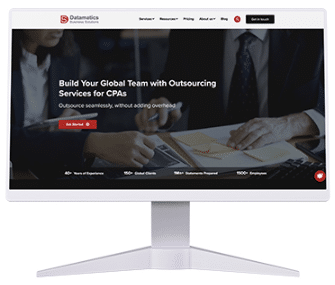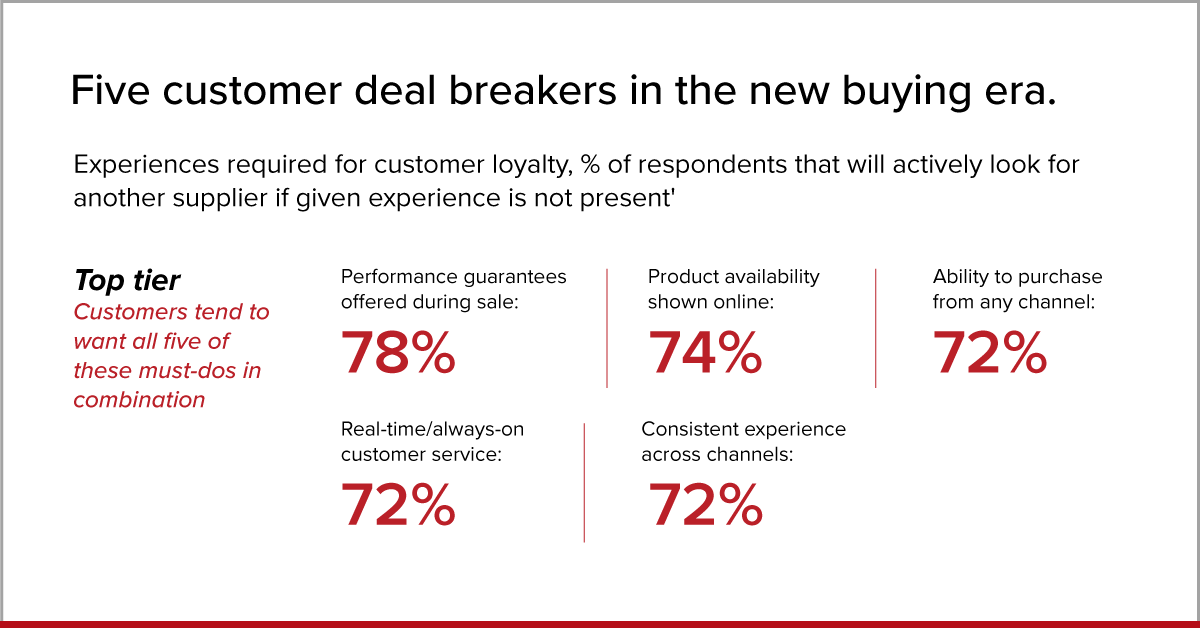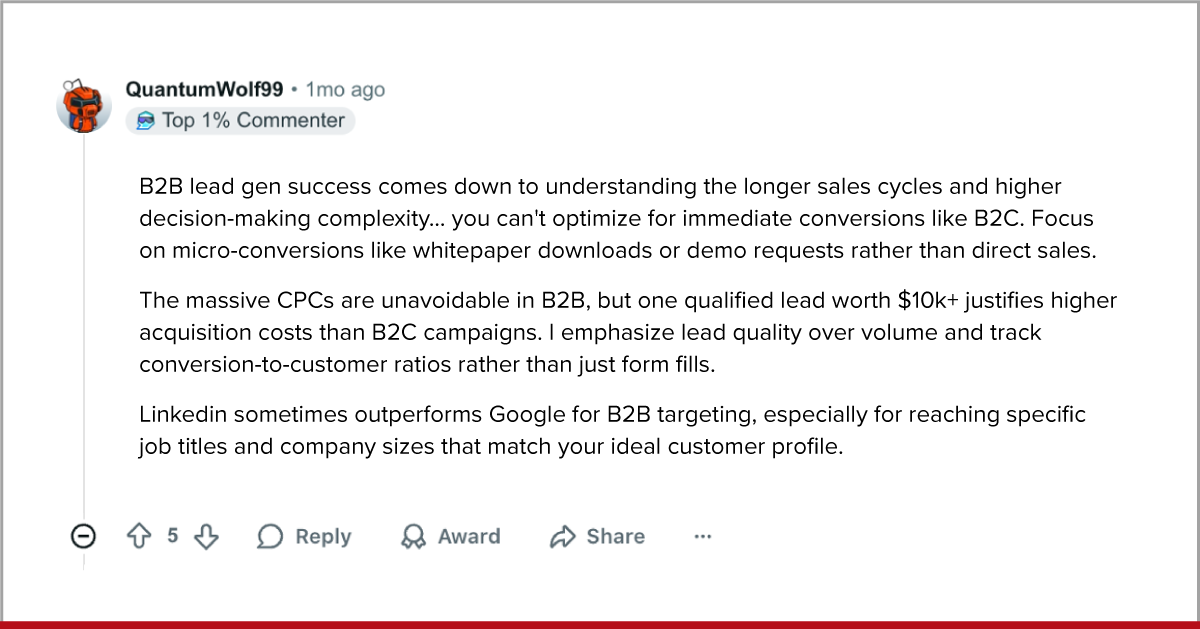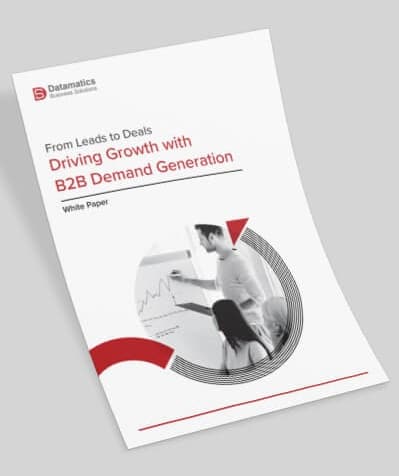You’ve tried LinkedIn outreach, email sequences, and content marketing—yet, something seems amiss. Sounds familiar?
In most of these cases, the issue lies not in the channel but the system running it. Here are three patterns that repeatedly hold back your B2B lead generation strategies from driving revenue:
- The ‘spray-and-pray’ outreach, where you’re targeting everyone instead of the right few.
- No repeatable system with disconnected tools and processes that can’t scale.
- The ‘feature-first, benefit-next’ approach oriented messaging that boasts what your services do instead of enunciating what business problems you’re solving.
Fixing these three gaps is where consistent pipeline growth begins.
But when sales cycles are getting longer, buying committees are expanding, and lead quality remains inconsistent, it’s about time you revamp your lead generation strategies. This blog explores just the basics you need to transform your lead generation services into a revenue powerhouse.
But first, some basic maths to make you understand why.
How A Basic Lead Gen Strategy Impacts Your Revenue?
According to Exploding Topics, organizations generate 1,877 leads per month on an average, and the mean cost per lead across all industries is $198.44. That’s a monthly investment of nearly $372,754 in lead generation efforts!
Now, let’s consider a realistic scenario. Given that 44% of sales reps are too busy to follow up with leads, a large portion of that investment risks going to waste.
Here’s what that looks like in numbers:
1,877 leads X 44% = 826 uncontacted leads
826 leads X $198.44 = $163,919.44 monthly loss
$163,919.44 X 12 = $1,967,033.28 annual loss
That’s nearly $2 million in potential revenue lost every year. Not because of poor marketing, but because follow-ups and qualification often fall through the cracks.
So, even the best lead generation campaigns fail without a strong follow-up and qualification process. Instead of chasing lead volume, businesses need to build intent-driven, data-backed lead generation strategies that ensure every lead gets the attention it deserves.
The importance of an effective lead generation strategy
An effective lead generation strategy doesn’t just fill your CRM. It powers predictable growth. When grounded in accurate data, verified intent, and consistent follow-ups, it transforms raw leads into genuine opportunities.
In today’s competitive B2B landscape, where buying decisions are complex and attention spans are short, a refined lead generation approach isn’t just good practice—it’s a revenue safeguard.
Your B2B Lead Gen Strategies Need a Revamp Today!
Despite a solid strategy, B2B lead generation services are failing, and for one simple reason. Buyers have evolved faster than the strategies used to reach them. Traditional outreach built on volume, repetition, and cold engagement no longer converts in a market where expectations are defined by immediacy and experience.
Recent data from McKinsey shows how dramatically the buying landscape has shifted.
- 78% will switch suppliers if sales lack performance guarantees.
- 74% expect real-time product availability online.
- 72% want omnichannel buying, always-on support, and consistent experiences.
These expectations expose the flaw in outdated lead generation. It focuses on chasing attention rather than building trust. Sending thousands of emails or running broad ad campaigns does little when buyers expect relevance, transparency, and assurance before they even engage.
Internal sales teams spend hours on low-value outreach and lose momentum trying to personalize at scale. Conversion rates keep falling, and acquisition costs keep rising as quantity-driven tactics deliver fewer qualified leads.
Modern B2B lead generation must shift from activity-based execution to data-led precision, real-time responsiveness, and measurable accountability. It’s no longer about doing more but smarter outreach that aligns with how today’s buyers research, evaluate, and decide. And your B2B lead generation strategies are the make-or-break factors here.
Do B2B Lead Generation Services Actually Deliver?
Yes. Your B2B lead generation services do far more than pass along contact lists. They build structured, sales-ready opportunities backed by accurate data, verified intent, and measurable engagement.
The focus is not on volume, but on highly qualified leads—prospects who align with your ideal customer profile and have a genuine intent to buy. Here’s what professionals on a r/PPC thread remark:
8 Proven Strategies To Transform Your Lead Generative Services Into a Revenue Powerhouse
Strong B2B lead generation is built on discipline, precision, and consistency.
Below are eight proven strategies to help you transform your lead generation services into a sustainable growth engine that drives measurable sales outcomes.
1. Define your ICP and maintain data hygiene
Revenue starts with data clarity. Without a well-defined Ideal Customer Profile (ICP), even the most creative campaigns fail to convert. Your ICP should capture firmographics, buying intent, decision roles, and current tech stack—helping you identify accounts most likely to convert.
Clean, verified data ensures that every prospect is relevant and reachable. Regular enrichment and cleansing prevent duplication, mistargeting, and wasted sales effort. Marketers on Reddit often note that most “failed” campaigns stem not from poor creative or low budgets, but from imprecise audience definition. When data hygiene becomes a priority, outreach precision and ROI improve instantly.
2. Build structured outbound outreach
Outbound success lies in structure, not scale. Combine automation with human nuance to build multi-touch sequences across email, LinkedIn, and direct calls—each message tailored to a specific business context or pain point.
Automation enables reach, but personalization drives response. As one PPC professional aptly said, it’s not about sending a thousand emails—it’s about sending the right hundred with precision and intent.
3. Nurture inbound leads with content
Content is indeed the king—74% of companies claim that good content marketing significantly boosted their lead generation success rates
Inbound demand takes longer to build, but it delivers higher-quality, self-qualified leads over time. Educational content, blogs, whitepapers, webinars, and guides attract prospects who are actively seeking solutions. In fact, brands leveraging blogging have 13 times more leads and ROI than those that don’t.
The goal isn’t an immediate sale. It’s to build trust, credibility, and preference so that when the buyer is ready, your brand is already top of mind.
4. Focus on account-based targeting
In B2B, decisions are rarely made by one person. That’s why account-based marketing (ABM) targets entire buying committees, procurement, finance, operations, and tailoring. communication to each stakeholder’s priorities.
A CFO wants ROI projections. A technical lead values performance and integration. Aligning your messaging with each role turns fragmented interest into collective intent, improving conversion rates and deal velocity.
5. Score and route leads effectively
Not every lead deserves the same attention. A strong lead scoring model evaluates prospects by engagement, fit, and purchase intent. Once a lead passes a defined threshold, it’s routed instantly to sales for follow-up—keeping the momentum alive.
Companies with clear MQL-to-SQL handoff processes consistently report shorter sales cycles, better win rates, and more predictable revenue outcomes.
6. Measure and optimize continuously
What you don’t measure, you can’t scale. The fastest-growing B2B teams review conversion data weekly, identifying underperforming channels and reallocating budgets accordingly.
Track metrics like MQL-to-SQL conversion rate, lead velocity, deal size, and time-to-first contact. When these trends are upward, pipeline predictability and sales confidence rise together.
7. Personalize your web and ad experiences
What you don’t measure, you can’t scale. The fastest-growing B2B teams review conversion data weekly, identifying underperforming channels and reallocating budgets accordingly.
Track metrics like MQL-to-SQL conversion rate, lead velocity, deal size, and time-to-first contact. When these trends are upward, pipeline predictability and sales confidence rise together.
8. Using social proof and social selling
LinkedIn remains the strongest channel for B2B demand generation, driving nearly 80% of B2B social media leads. It’s also where 94% of B2B marketers focus their sales and lead generation efforts. The reason is simple—TRUST. In B2B, trust is the final trigger that converts interest into revenue.
Case studies, testimonials, and peer recommendations establish the credibility buyers need to take action. That’s why LinkedIn becomes a space for social selling: engaging with decision-makers, commenting on relevant industry discussions, and sharing insights that signal expertise and reliability. Here, consistency matters more than volume. Regular, meaningful participation builds visibility and authority over time.
As many B2B practitioners have observed, genuine human credibility drives more qualified conversations and, ultimately, more booked meetings than any ad budget ever could.
You can also read: Debunking 8 Assumptions Holding Back Your Lead Generation Tactics
Plugging In Tech and Automation For Boosted Assistance
Without connected tools and clean data, it’s impossible to sustain velocity, consistency, or visibility across campaigns. In fact, marketing automation software alone can increase the number of qualified leads by up to 451%.
The best-performing teams build an ecosystem where data flows seamlessly, systems talk to each other, and every decision is grounded in evidence, not assumptions. Here’s what a mature tech-data stack typically looks like:
- CRM (HubSpot, Salesforce): Centralizes contacts and tracks every buyer interaction, from first touch to closed deal, making pipeline performance transparent.
- Intent data platforms (Bombora, 6sense): Identify accounts already researching your solutions, so outreach begins with context, not cold calls.
- Data enrichment tools (ZoomInfo, Clearbit): Keep contact details current and compliant, ensuring accuracy even as roles and organizations evolve.
- Outreach automation (Apollo, Outreach.io, Salesloft): Maintains cadence and personalization at scale—no leads forgotten, no touchpoints missed.
- Analytics and attribution Tools: Tie marketing effort directly to revenue contribution, revealing which channels and campaigns actually convert.
This integrated approach matters because it transforms operations from reactive to predictive:
- Connected systems cut manual work and eliminate silos between marketing and sales.
- Automated data refreshes maintain accuracy and compliance.
- Real-time dashboards empower teams to adjust campaigns before performance dips.
The most effective B2B lead generation companies use automation not just to scale but to enforce data quality, compliance, and reporting transparency across global accounts.
7 Common Mistakes that Derail B2B Lead Generation (+How To Avoid Them)
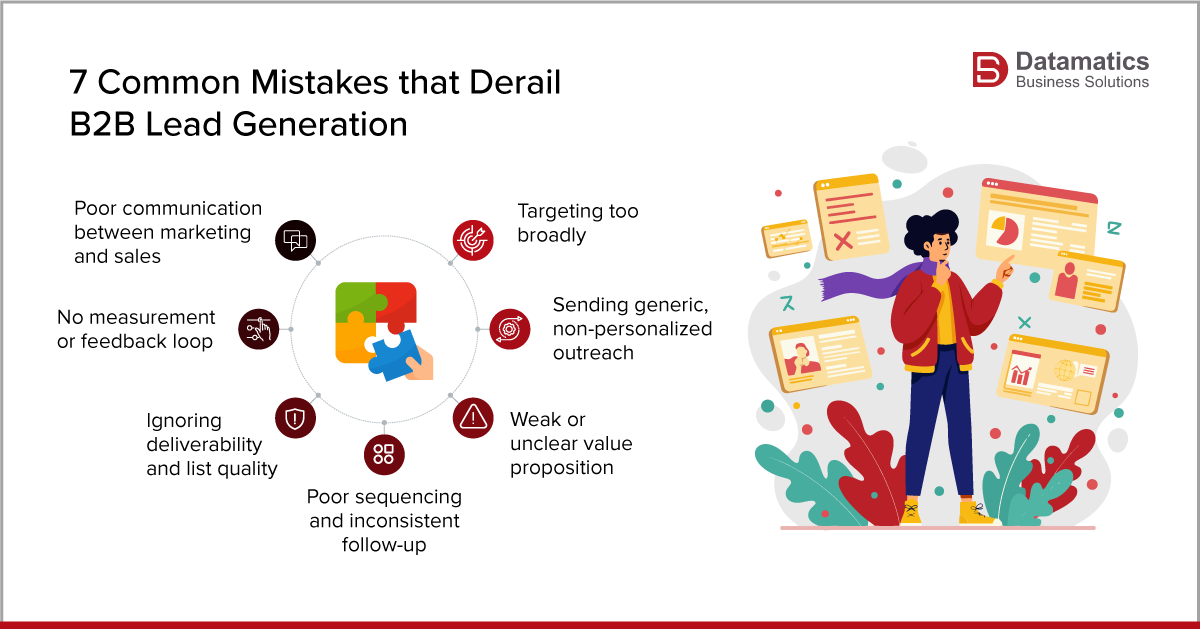
Even experienced teams can lose traction when their lead generation lacks structure, discipline, or audience awareness. Here are the most frequent and costly mistakes seen across B2B programs today, and how to avoid them.
1. Targeting too broadly
Many teams chase volume instead of relevance. When campaigns reach audiences outside your Ideal Customer Profile, engagement drops and conversion costs rise. Refine your ICP before building lists or launching ads.
How to avoid it: Build segmented lists based on firmographics, buying signals, and decision roles before launching outreach.
2. Sending generic, non-personalized outreach
Cold emails and LinkedIn messages fail when they read like templates. Prospects can recognize copy-paste content instantly. Personalize every message with context—industry pain points, recent activity, or role-specific challenges.
How to avoid it: Personalize every touchpoint with insights from intent data, recent activity, or pain points specific to their role or industry.
3. Weak or unclear value proposition
If the offer isn’t specific, the reader won’t respond. Generic “we can help you grow” claims don’t work. Replace them with tangible outcomes such as cost savings, efficiency gains, or risk reduction.
How to avoid it: Lead with measurable outcomes like cost savings, faster delivery, better accuracy, and back them with short proof points or customer results.
4. Poor sequencing and inconsistent follow-up
One email or connection request isn’t a strategy. Many leads convert only after multiple touches. Plan structured follow-up sequences with value-driven content across 3–5 touchpoints before closing the loop.
How to avoid it: Build multi-step outreach cadences with 4-6 touchpoints across different channels, balancing persistence with value in each interaction.
5. Ignoring deliverability and list quality
Sending to unverified or outdated addresses damages domain reputation and lowers deliverability. Use validated data sources, run hygiene checks weekly, and maintain a strong sending domain.
How to avoid it: Use verified contact databases, monitor bounce rates, and warm up new domains before scaling outreach.
6. No measurement or feedback loop
Without tracking replies, bounce rates, or conversion ratios, improvement becomes impossible. Review analytics weekly and A/B test subject lines, message tone, and timing to learn what works.
How to avoid it: Track key metrics like open rate, reply rate, MQL-to-SQL conversion, and cost per opportunity. Review and adjust campaigns weekly.
7. Poor communication between marketing and sales
Leads often stall because marketing and sales teams define “qualified” differently. Align early on scoring models, handoff processes, and follow-up expectations.
How to avoid it: Define lead scoring rules together, standardize handoff processes, and review shared dashboards to maintain accountability.
Inconsistent targeting, weak messaging, and poor follow-up discipline are the biggest revenue blockers in B2B lead generation today. Precision, visibility, and iteration make the difference between a busy pipeline and a productive one.
When In-House Efforts Stall, Outsourcing Scales.
When internal lead generation hits a ceiling, outsourcing accelerates growth. Studies show that outsourced lead generation services deliver 43% better results than in-house programs. The reason is straightforward. The same study cites that 61% of B2B marketers cite lack of staff, funding, or time as their biggest obstacle to generating quality leads. This is where outsourcing shines.
Outsourced lead generation works because it brings focus, structure, and repeatability that in-house teams often struggle to maintain. Specialist providers combine data infrastructure, analytics, and trained expertise to build qualified pipelines faster and at lower acquisition costs. This frees internal teams to focus on closing deals instead of managing prospecting operations.
Beyond Lead Generation Strategies: Why Choosing the Right Partner Matters
Not every lead generation provider fits every business. The right partner should complement your internal capabilities, understand your market, and deliver measurable, repeatable outcomes, not vanity metrics. Selecting one requires due diligence and clarity on what truly drives revenue performance.
When evaluating B2B lead generation service providers, these should be your non-negotiables:
- Industry experience and ICP alignment: Check whether the vendor has delivered results for your vertical and understands your buyer personas. A partner unfamiliar with your industry will struggle to build relevant messaging or accurate targeting.
- Data sourcing methodology: Ask where their data comes from, how frequently it’s verified, and what enrichment processes are used. Clean, compliant data is the backbone of performance.
- SLA-based delivery and quality control: Ensure clear service-level agreements around lead volume, qualification criteria, and response times.
- Lead scoring standards: Review how they define and prioritize highly qualified leads to avoid misaligned expectations.
- Transparency in reporting: Look for real-time dashboards, weekly reports, and access to raw campaign data.
- Flexible pricing models: Performance-based or hybrid pricing often keeps incentives aligned with your goals.
Recurring issues like poor communication, delayed updates, and unclear results are common across outsourcing engagements. Avoid these pitfalls by insisting on complete visibility, scheduled progress reviews, and clearly defined accountability. Before signing, request detailed case studies, verified pipeline contribution metrics, and sample performance reports to validate their claims.
Why Datamatics Business Solutions Is Your Trusted Partner?
Datamatics Business Solutions takes this efficiency a step further by combining performance, compliance, and scalability within a unified delivery framework:
- Data-driven targeting: Every campaign is built on verified data, analytics, and ICP-based segmentation to ensure conversion relevance.
- SLA-based delivery: Performance is governed by defined metrics, transparent reporting, and measurable accountability.
- Compliance and data security: Strict governance standards support regulated industries such as finance, CPA, and professional services.
- Scalable execution: Proven delivery models across industries and markets enable quick ramp-up without additional sales overhead.
For enterprises seeking predictable pipeline growth and operational clarity, Datamatics Demand Gen delivers an insight-led, performance-focused approach that turns outsourcing into a strategic growth advantage. Speak to our experts to learn more.

Paul van de Kamp

